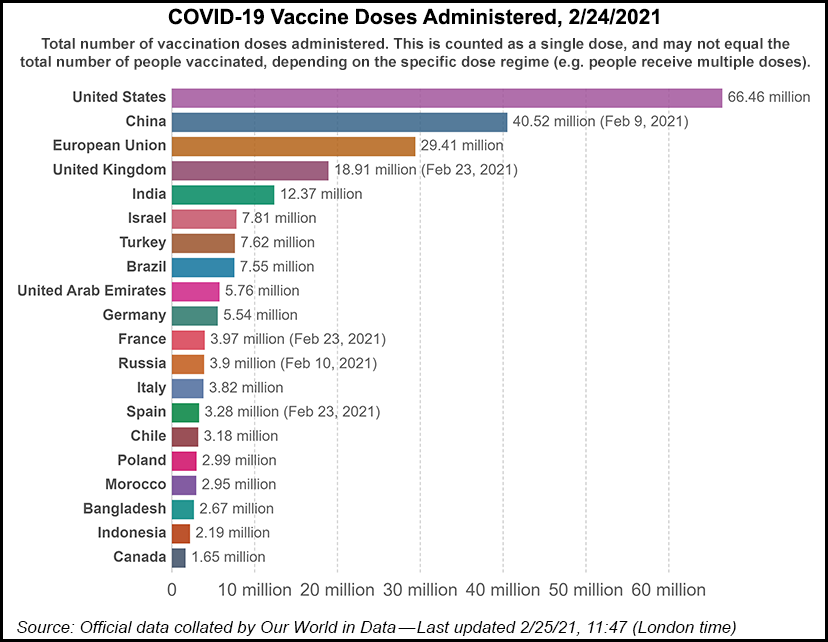Massive declines spread across natural gas forward markets for the trading period ending Wednesday, fueled primarily by a return to the warm weather pattern that has characterized most of the winter season.
A quick ramp in production following last week’s historic winter storm also served as a headwind for prices, with March averaging 34.0 cents lower during the Feb. 18-24 period, according to NGI’s Forward Look.
April contracts also took a big hit, falling 19.0 cents on average for the period, while the summer strip (April-October) dropped 13.0 cents on average, Forward Look data showed. Prices for next winter (November-March) posted double-digit losses as well, averaging 10.0 cents lower on the week.
The price decreases across U.S. forward curves were expected...



